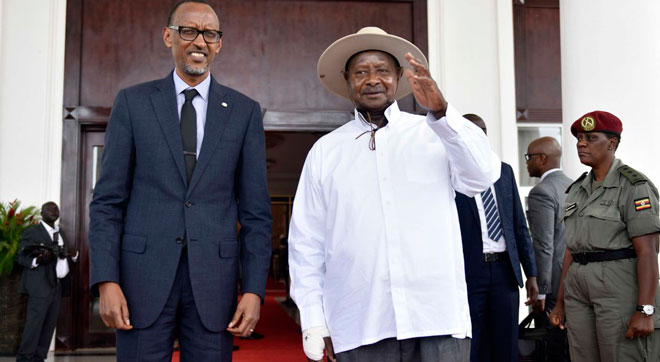
EAC dispute redress mechanism weak- Integration expert
Baca Juga

Kampala, Uganda | THE INDEPENDENT | A trade integration expert has said that for East African States to fail to resolve their issues points to a weak dispute redress system.
Dr Isaac Shinyekwa, a senior research fellow on integration at the local think tank Economic Policy Research Centre, said trade disputes should not be a surprise. However, EAC partner states should be able to resolve them quickly to continue trading seamlessly.
Uganda’s milk exports to Kenya have recently been hampered by occasional seizures with Nairobi claiming that they are counterfeit. Kenya says it seeks to protect its milk producers from depressed prices by milk imports.
On the other hand, Tanzania has rejected Ugandan sugar claiming it is imported into the country and then repackaged and exported to Dar es Salaam.
Also, Tanzania has refused to take Uganda’s timber. The dispute between Rwanda and Uganda that has led to the closure of the Gatuna border is not being handled by the East African Community dispute redress system.
Technically, these are known as non-tariff barriers – which means administrative interventions that are not taxes but nonetheless prohibit smooth flow of trade. They can even be something as simple as poor infrastructure and import bans.
The EAC passed a Non-Tariff Barriers Act 2017 to deal with such issues. Shinyekwa says this should be able to resolve these disputes.
There have been calls among Ugandans for retaliatory measures. However, President Museveni has said Uganda will retaliate over Kenya’s blocking of Uganda’s milk by also blocking Kenya’s products from entering Uganda. He said Uganda can use alternative markets for the same.
This is despite the fact that Kampala’s protest note to the Kenyan authorities said Uganda might retaliate.
Shinyekwa said Uganda is one of the disciplined countries that have been playing by the rules.
EAC rules provide that the aggrieved country can sue the country imposing import ban in the East African Court of Justice.
However, a country can also initiate the elimination of an identified NTB through the Time-Bound Programme, by presenting a written notification to the country responsible for said barrier.
A National Monitoring Committee (NMC) of the responsible country is then expected to investigate the impact of the reported NTB, as well as the required time and potential challenges to eliminating it.
According to a 2017 study by the Consumer Unity and Trust Society, a not-for-profit consumer protection organization found that some NMCs are weak, lacking skills to investigate or capacity to evaluate the impact of the barriers and provide solutions.
This has left the region plagued by constant trade disputes that are instead hampering free flow of goods.
This month, regional leaders are expected to meet in the summit where the current trade issues among member states will take centre stage.
Shinyekwa said the members can also utilize the meeting of the permanent secretaries of the East African ministries in partner countries to air their grievances.
******
URN
The post EAC dispute redress mechanism weak- Integration expert appeared first on The Independent Uganda:.

0 Response to "EAC dispute redress mechanism weak- Integration expert"
Post a Comment